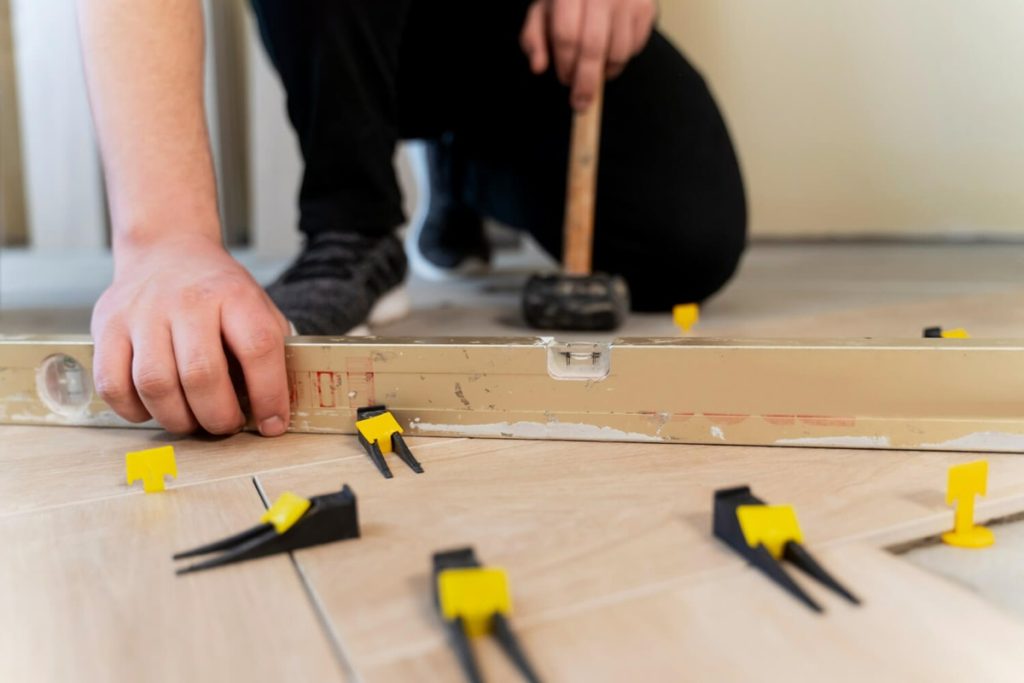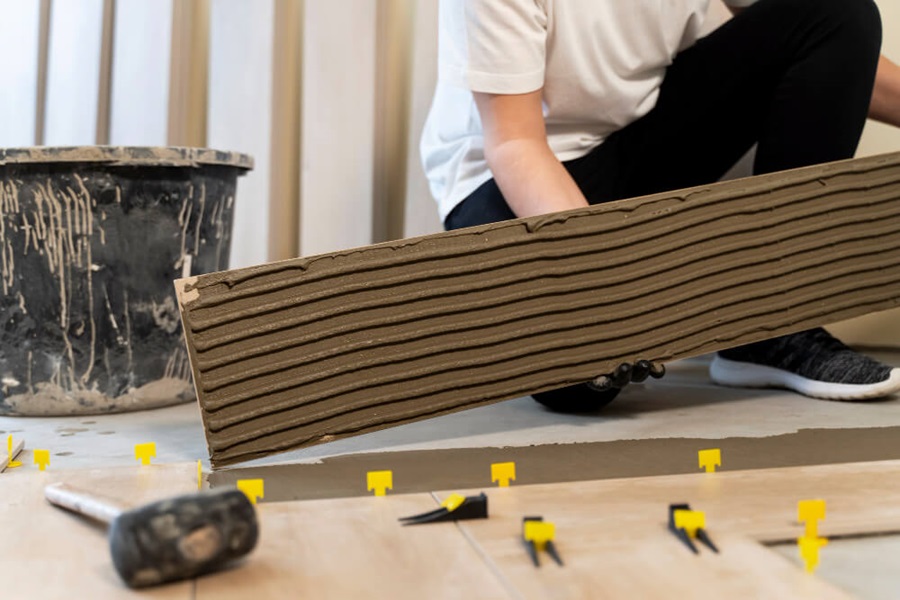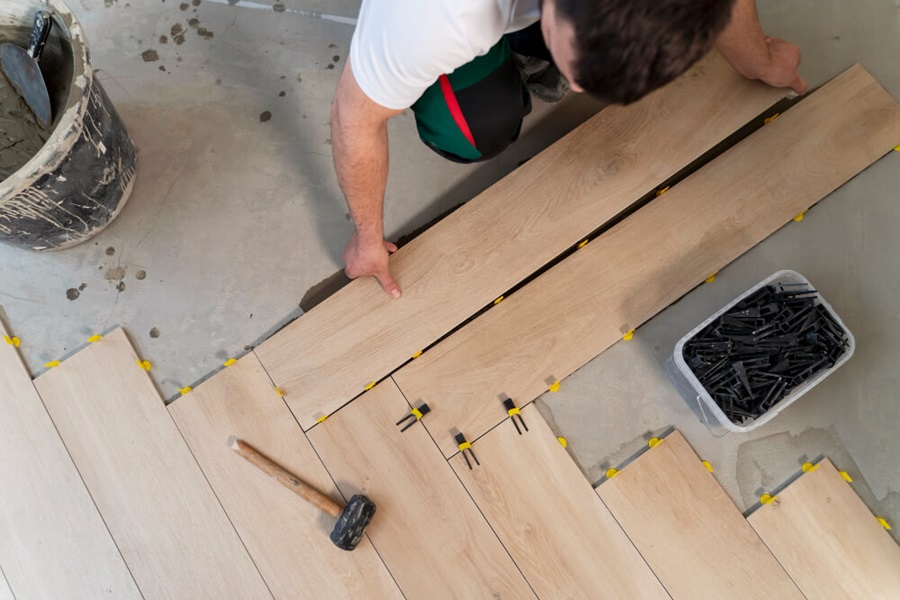
Find out how to eliminate unwanted noises from your floorboards in this expert guide on underfloor soundproofing and insulation.
Underfloor heating offers warmth, but sometimes at the cost of unwanted noise. In this article, you will learn everything that there is to know about underfloor soundproofing and insulation, ensuring your heated floors are not just efficient, but also pleasantly quiet. We’ll explore the reasons behind the noise issues, and effective solutions like acoustic overlay boards, joist strips, and isolation tape.
We provide only the best underfloor heating services in the UK. Choose from our range of eco-friendly systems today.
- How Does Underfloor Soundproofing Insulation Work?
- Does Underfloor Heating Contribute to Noise?
- Effectiveness of Acoustic Overlay Boards
- Resilient Felt Strips For Soundproofing Insulation
- Adhesives and Levelers For Levelled Flooring
- Installing Flooring Insulation
- How To Install Underfloor Soundproofing Insulation
- Problems With Installing Underfloor Insulation:
- Underfloor Insulation Maintenance
- Effective Underfloor Soundproofing Insulation Methods
- FAQs
- Sources
How Does Underfloor Soundproofing Insulation Work?
In the UK, a significant number of buildings, including homes, offices, and public spaces, utilise timber joists in constructing and separating floors. This structural choice aligns well with various underfloor heating systems, making them a common fixture. However, a notable drawback of timber joist construction is its susceptibility to transmitting impact noises, such as the echoing of footsteps or the thud of objects dropped on the floor.
For those that want a challenge for underfloor heating installation, learn how to install underfloor heating between joists and underfloor heating on timber floors now.
Does Underfloor Heating Contribute to Noise?
No matter whether it is electric UFH or wet underfloor heating, when installed with precision, underfloor heating systems typically operate quietly. Problems arise, akin to those in radiator systems, when air infiltrates the system, leading to noise generation. Noise issues can also emerge if installation components, like clips, are improperly fitted or if the screed surrounding the pipework is not mixed correctly and deteriorates. Ensuring correct installation and maintenance is key to achieving a noise-free underfloor heating experience.
Effectiveness of Acoustic Overlay Boards

Utilising acoustic overlay boards is a well know phenomenon to reduce noise. Underfloor heating insulation boards usually combine robust chipboard with specially designed felt to significantly reduce noise transmission compared to traditional timber flooring. However, with underfloor heating, these boards could potentially reduce heat flow. The thermal resistance of the boards might limit the transfer of heat from the pipes to the room, necessitating a careful balance between soundproofing and heating efficiency. However, the technology behind our underfloor heating insulation boards have been designed to prevent this issue from occurring, and ultimately improve your underfloor soundproofing experience.
Resilient Felt Strips For Soundproofing Insulation
A key innovation in this area is the Novatherm foiled faced in joist/batten system, suitable for suspended floors. These strips are specifically designed for joist treatment, combining a hardboard slat of 1200mm x 350mm x 50mm dimensions with a resilient material. When placed atop timber joists, they provide a sturdy and smooth base for various flooring boards like chipboard, OSB, or plywood with a tongue and groove mechanism. The unique placement of this resilient layer atop your joists allows the heat from the underfloor heating pipes, nestled between the joists, to effectively permeate through most of the floor, heating the room efficiently while substantially reducing impact noise.
However, in some domestic refurbishments, this suspended floor panel might pose challenges due to the increase in floor height. Therefore, be sure to contact us today to see what floor panels are best for your underfloor soundproofing and insulation projects.
Adhesives and Levelers For Levelled Flooring
Another effective solution is by using adhesives and self levelling floor compounds to ensure that, when installing underfloor heating, the system will stay securely in place and won’t disrupt heating flow. Securing your underfloor heating will reduce the risk of unbalanced floorboards, effectively isolating timber joisted, masonry, and metal beam constructions.
Installing Flooring Insulation
Properly insulating the ground floor is essential in preventing impact noise. This step is crucial not only for acoustic comfort but also for thermal efficiency. In homes without existing insulation, up to 10% of heat can be lost through the floor.
In cases of suspended floors, where a gap exists between the floorboards and the ground, the benefits of both thermal and acoustic insulation are prevalent. Conversely, in homes with solid concrete floors, the impact of acoustic insulation might be minimal, but thermal insulation remains highly beneficial. Learn more by viewing our guide on underfloor heating on concrete floors.
How To Install Underfloor Soundproofing Insulation

Acoustically insulating the ground floor of a property is a critical step in improving both comfort and energy efficiency. This form of insulation effectively lessens impact noises — such as the sound of footsteps in the kitchen causing reverberations in the living room. In addition to noise reduction, ground floor insulation plays a vital role in thermal retention.
Uninsulated floors can lead to significant heat loss, approximately 10% of a home’s total heat escaping into the ground, especially in homes with suspended floors. Here, the gap between the floorboards and the underlying concrete or ground benefits greatly from dual thermal and acoustic insulation. In contrast, properties with solid concrete floors will see less impact in terms of acoustic insulation but substantial gains in thermal insulation.
Insulating between floors is equally important. This is not only effective in soundproofing but also in enhancing the overall thermal efficiency of a building. Multi-layered insulation methods, tailored for inter-floor installation, offer a straightforward installation process, significant noise reduction, and excellent value for money.
Problems With Installing Underfloor Insulation:
Installing underfloor soundproofing and insulation systems can present several challenges, key among them being space limitations and compatibility with existing structures. Often, the thickness of insulation materials and soundproofing layers can raise floor levels, posing a challenge in rooms with limited vertical space.
To address this, choose slim-profile, high-performance materials that offer effective insulation without raising the height of the flooring. Another common issue is ensuring compatibility with the existing heating system and floor structure. This requires careful selection of materials and methods that align with the type of underfloor heating (UFH) system, whether it’s electric or hydronic. For cases where the UFH involves water pipes, using waterproof and heat-resistant insulation is crucial to prevent moisture problems and ensure efficient heat distribution.
Additionally, it is highly recommended to hire professionals for complicated tasks such as this, since they will be experienced in navigating these complexities and can lead to a more seamless and efficient installation process.
Underfloor Insulation Maintenance
The maintenance and longevity of underfloor insulation and soundproofing materials are critical for sustained performance and cost-effectiveness. Generally, most high-quality underfloor insulation materials, such as mineral wool, polystyrene boards, and polyurethane foam, have a long lifespan, often matching that of the building itself. We recommend that you get the insulation and soundproofing checked on a regular basis to maintain their efficiency.
Homeowners should look out for signs of dampness or pest infestation, as these can compromise the insulation’s performance. In terms of upkeep, materials like mineral wool are low-maintenance, but you should ensure that they remain dry and undisturbed.
Some insulation materials can settle or compact over time, reducing their effectiveness. In such cases, periodic checks and potential top-ups or replacements might be necessary. Investing in durable and resistant materials, even if initially more costly, can lead to long-term savings by reducing the need for frequent replacements and maintaining energy efficiency in the home. Ultimately, the choice of material should balance initial costs with long-term benefits in terms of maintenance, durability, and energy conservation.
Find out more about heat loss on our guide about what causes heat loss in homes?
Effective Underfloor Soundproofing Insulation Methods
In conclusion, integrating soundproofing and insulation in underfloor heating systems is essential for a comfortable and efficient home environment. From using resilient felt strips and isolation tapes to selecting the right acoustic overlay boards, each component plays a significant role in reducing noise and improving heat performance. Ground floor insulation not only curbs the transmission of impact noise but also prevents heat loss, making it a dual-purpose solution. Similarly, insulating between floors contributes to a peaceful and thermally efficient living space.
Did you know that families are able to save money through insulation? Find out more here.
FAQs
Does underfloor insulation reduce noise?
Yes, underfloor insulation can reduce noise to some extent by dampening vibrations and sound transmission between floors. However, its effectiveness may vary depending on the insulation type and installation.
What is the best underfloor sound insulation?
The best underfloor sound insulation depends on your specific needs and budget. Common options include acoustic mats, acoustic underlay, or resilient channel systems. Consult with an expert to choose the most suitable one for your situation.
How do I stop sound travelling through my floor?
To stop sound from travelling through your floor, you can:
Install underfloor insulation or soundproofing materials.
Use area rugs or carpets to absorb sound.
Seal gaps and cracks in walls and floors.
Add heavy curtains or acoustic panels to absorb sound waves.
Does floor sound insulation work?
Yes, floor sound insulation can be effective in reducing the transmission of sound between floors, making it a viable solution for noise control in buildings. However, the effectiveness depends on the type of insulation used and proper installation.
Sources
GOV.UK (2023) Families to save hundreds through £1 billion insulation scheme. [online] Available at: https://www.gov.uk/government/news/families-to-save-hundreds-through-1-billion-insulation-scheme [accessed 12/12/23]
